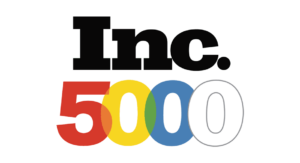Despite significant strides towards gender equality, the persistent gender gap in leadership roles across industries remains a critical issue. Women continue to be underrepresented in executive positions, facing systemic barriers that hinder their professional advancement.
At Boardsi, we understand that empowering women leaders is essential for fostering a more inclusive and dynamic workplace. When women hold leadership positions, they bring unique insights and approaches that can drive organizational success.
Diverse leadership teams are better equipped to understand and meet the needs of a varied customer base, leading to improved decision-making and enhanced performance. Female leaders often champion policies and practices that promote equality and work-life balance, benefiting the broader workforce.
Encouraging more women to pursue and achieve leadership roles is a strategic imperative for businesses and society. By unlocking the full potential of women leaders, we can stimulate innovation, drive economic growth, and create more resilient and adaptable organizations.
Boardsi reviews the dynamic aspects of the gender gap, the challenges faced by women in technology, and the importance of promoting diversity and inclusion. Continued discussion around the critical role of education and training, advocacy, and policy reform in closing the gender gap, is key to making strides, in the board room and throughout the workforce.
What is the Gender Gap?
Understanding the gender gap is essential to addressing the disparities that exist in representation, pay, and opportunities for women across various industries. The gender gap is defined by significant differences in the participation and advancement of men and women in the workforce. This gap manifests in various ways.
- Representation: Women are underrepresented in leadership roles, with fewer women occupying executive positions and board seats compared to their male counterparts.
- Pay: Women typically earn less than men for the same roles, contributing to a persistent wage gap.
- Opportunities: Women often have fewer opportunities for career advancement and professional development.
Historical Context
The roots of gender inequality in professional settings can be traced back to historical and cultural norms that have long relegated women to secondary roles. For centuries, women were excluded from formal education and professional careers, limiting their participation in the workforce.
Even as societal norms began to shift in the 20th century, women faced significant barriers in entering and advancing within professional fields. These historical constraints have had a lasting impact, creating entrenched biases and systemic barriers that continue to affect women’s career trajectories today.
Current State of Affairs
Despite progress, the gender gap remains substantial. Statistics and trends highlight the ongoing challenges:
- Representation in Leadership: According to recent studies, women hold only about 29% of senior management roles globally.
- Wage Gap: On average, women earn approximately 82 cents for every dollar earned by men, with even larger gaps for women of color.
- Opportunity Disparities: Women are less likely to be promoted to senior positions, with many experiencing a “glass ceiling” that limits their advancement.
Addressing the gender gap requires a multifaceted approach, including policy changes, organizational commitment to diversity, and societal shifts in attitudes towards gender roles. By understanding the depth and breadth of the gender gap, we can develop targeted strategies to promote equality and empower women in the workforce.
What Challenges Do Women in Technology Face?
Women in technology encounter a range of challenges that hinder their professional growth and limit their representation in this critical industry. Understanding these obstacles is key to developing effective strategies for creating a more inclusive and supportive environment.
Stereotypes and Biases
Women in tech often face pervasive stereotypes and biases that contribute to the so-called “glass ceiling,” a metaphorical barrier preventing them from advancing to top positions. Common stereotypes suggest that women are less competent in technical fields, leading to biased hiring and promotion practices.
These biases can manifest in various ways:
- Performance Evaluations: Women may receive harsher evaluations and less recognition for their achievements.
- Leadership Opportunities: Women are often overlooked for leadership roles due to entrenched gender biases.
Breaking through these barriers requires a concerted effort to challenge and change these stereotypes, fostering a culture that values diversity and merit.
Work-Life Balance
Balancing career advancement with familial responsibilities remains a significant challenge for many women in technology. The tech industry is known for its demanding work schedules, which can make it difficult for women to manage both professional and personal commitments. Key issues include:
- Flexible Work Arrangements: Many women struggle to find employers that offer flexible working hours or remote work options.
- Supportive Policies: Lack of policies such as parental leave and childcare support can further complicate work-life balance.
Organizations must prioritize creating flexible and supportive work environments that enable women to thrive both at work and at home.
Lack of Mentorship and Support Networks
Mentorship and support networks are crucial for career development, yet many women in technology lack access to these resources. The absence of mentors and allies can leave women feeling isolated and without guidance.
The importance of mentorship programs and allyship includes career guidance, as well as networking opportunities and advocacy. Mentors can provide valuable advice and support, helping women navigate their career paths.
Support networks can open doors to new opportunities and foster a sense of community, while allies can advocate for women, promoting their achievements and ensuring they receive fair treatment.
By addressing these challenges, the tech industry can create a more inclusive and equitable environment, empowering women to achieve their full potential and contribute to innovation and growth.
How Can We Promote Diversity and Inclusion?
Promoting diversity and inclusion within organizations is a strategic advantage. Embracing a diverse workforce enhances creativity, problem-solving, and decision-making, leading to improved outcomes and innovation.
Importance of Diversity
Diversity brings a range of perspectives and experiences that enrich the workplace. The benefits of diversity include:
- Enhanced Creativity: Diverse teams bring varied viewpoints, which can lead to more innovative solutions and ideas.
- Better Problem-Solving: A mix of backgrounds and experiences can improve the ability to identify and solve complex problems.
- Improved Decision-Making: Diverse teams are better equipped to understand and meet the needs of a diverse customer base, leading to more informed and effective decisions.
Creating Inclusive Environments
To harness the full benefits of diversity, organizations must create inclusive environments where all employees feel valued and supported. Strategies for fostering a culture of belonging include the following:
- Inclusive Policies: Implement policies that promote equality, such as flexible working arrangements, parental leave, and anti-discrimination measures.
- Training Programs: Offer training on unconscious bias, cultural competency, and inclusive leadership to ensure all employees understand the importance of diversity and inclusion.
- Employee Resource Groups: Support the formation of employee resource groups (ERGs) that provide a platform for underrepresented groups to connect, share experiences, and advocate for change.
Intersectionality
Recognizing intersectionality is crucial in addressing overlapping forms of discrimination that individuals may face based on their race, gender, sexuality, disability, and other identities. Intersectionality highlights the complexity of discrimination and the need for tailored approaches to promote inclusion.
- Tailored Initiatives: Develop initiatives that address the unique challenges faced by individuals with intersecting identities.
- Holistic Policies: Implement policies that consider the diverse needs of all employees, ensuring no one is left behind.
- Continual Assessment: Regularly assess and refine diversity and inclusion strategies to ensure they are effective and inclusive of all employees.
Promoting diversity and inclusion is an ongoing effort that requires commitment and action at all levels of an organization. By embracing these principles, companies can create a more equitable and dynamic workplace, driving success and fostering innovation.
How Can We Empower Women Through Education and Training?
Empowering women through education and training is essential to closing the gender gap in the workforce, particularly in STEM (science, technology, engineering, and mathematics) fields. Providing women with the necessary skills and opportunities can help them break down barriers and achieve professional success.
Access to STEM Education
Breaking down barriers to entry in STEM education is crucial for empowering women.
- Early Exposure: Encourage girls to explore STEM subjects from a young age through school programs, extracurricular activities, and summer camps.
- Scholarships and Grants: Provide financial support through scholarships and grants to make STEM education more accessible to women from diverse backgrounds.
- Role Models: Highlight successful women in STEM to inspire and motivate young girls to pursue careers in these fields.
Skill Development Programs
Equipping women with the tools for success involves targeted skill development programs that address the unique challenges they may face. Effective programs include technical training and soft skills development as well as mentorship and coaching.
Technical Training is achieved by offering courses and workshops in emerging technologies and essential technical skills to keep women competitive in the job market.
Provide training in leadership, communication, and negotiation skills, which are critical for career advancement.
Establish mentorship programs that connect women with experienced professionals who can offer guidance and support.
Lifelong Learning Initiatives
Cultivating a continuous growth mindset is vital for career longevity and adaptability in a rapidly changing job market. Lifelong learning initiatives can include:
- Professional Development Courses: Encourage women to engage in ongoing professional development through courses and certifications that enhance their skills and knowledge.
- Online Learning Platforms: Promote the use of online learning platforms that offer flexible and accessible educational opportunities.
- Industry Conferences and Workshops: Support attendance at industry conferences and workshops that provide networking opportunities and exposure to the latest trends and innovations.
Empowering women through education and training not only benefits the individuals but also strengthens the overall workforce. By investing in these initiatives, we can create a more inclusive and dynamic professional environment where women can thrive and lead.
Advocacy and policy reform are pivotal in advancing gender equality and creating lasting change in the workplace. Through corporate responsibility, government intervention, and building coalitions, we can address systemic issues and promote a more equitable environment for all. Companies play a crucial role in prioritizing gender equality within their organizations. Legislation is essential in driving systemic change and closing the gender gap. Effective government interventions can include equal pay laws, anti-discrimination regulations, and parental leave policies. Enforce laws that mandate equal pay for equal work, ensuring that women receive the same compensation as their male counterparts. Strengthen anti-discrimination regulations to protect women from workplace harassment and bias. Implement robust parental leave policies that support both mothers and fathers, enabling better work-life balance and reducing the career penalties often faced by women. Collaborative efforts are crucial for effecting systemic change. Building coalitions can amplify the impact of advocacy efforts and drive broader societal shifts. Important steps include: By leveraging corporate responsibility, government intervention, and coalition-building, we can create a more inclusive and equitable workplace. These efforts are essential for breaking down systemic barriers and ensuring that women have equal opportunities to succeed and lead. The imperative to address gender inequality in leadership roles across industries becomes increasingly urgent as we look to the future. The advancements we have made thus far are commendable, yet there is much work to be done. Moving forward, it is crucial to implement sustainable strategies that not only promote gender equality but also ensure lasting change. Technology and globalization are reshaping the workplace, offering new opportunities to bridge the gender gap. By leveraging digital platforms and innovative solutions, organizations can create more flexible and inclusive environments. Remote work, for instance, can provide greater work-life balance, allowing more women to pursue leadership roles without sacrificing their personal commitments. Education and continuous professional development must remain at the forefront of our efforts. Encouraging women to pursue careers in STEM and other high-growth industries will be key to increasing their representation in leadership positions. Lifelong learning initiatives and skill development programs will equip women with the tools needed to excel in their careers and adapt to evolving industry demands. Policy reform and advocacy will continue to play a vital role. Governments, corporations, and civil society must work together to enforce and enhance policies that promote gender equality. This includes strengthening anti-discrimination laws, ensuring pay equity, and supporting parental leave. The future also demands a cultural shift. Organizations must foster inclusive cultures where diversity is not only accepted but celebrated. This involves challenging existing biases, promoting allyship, and ensuring that all employees feel valued and supported.How Can Advocacy and Policy Reform Drive Gender Equality?
Corporate Responsibility
Government Intervention
Building Coalitions
Looking to a Future of Continued Equality Efforts
#GenderEquality #WomenInLeadership #DiversityAndInclusion #WomenInTech #LeadershipDevelopment #CorporateGovernance #EmpoweringWomen #BoardroomDiversity #GenderGap #ProfessionalDevelopment #StrategicLeadership #OrganizationalSuccess #InnovationInLeadership #EqualOpportunities #AdvocacyAndPolicyReform









